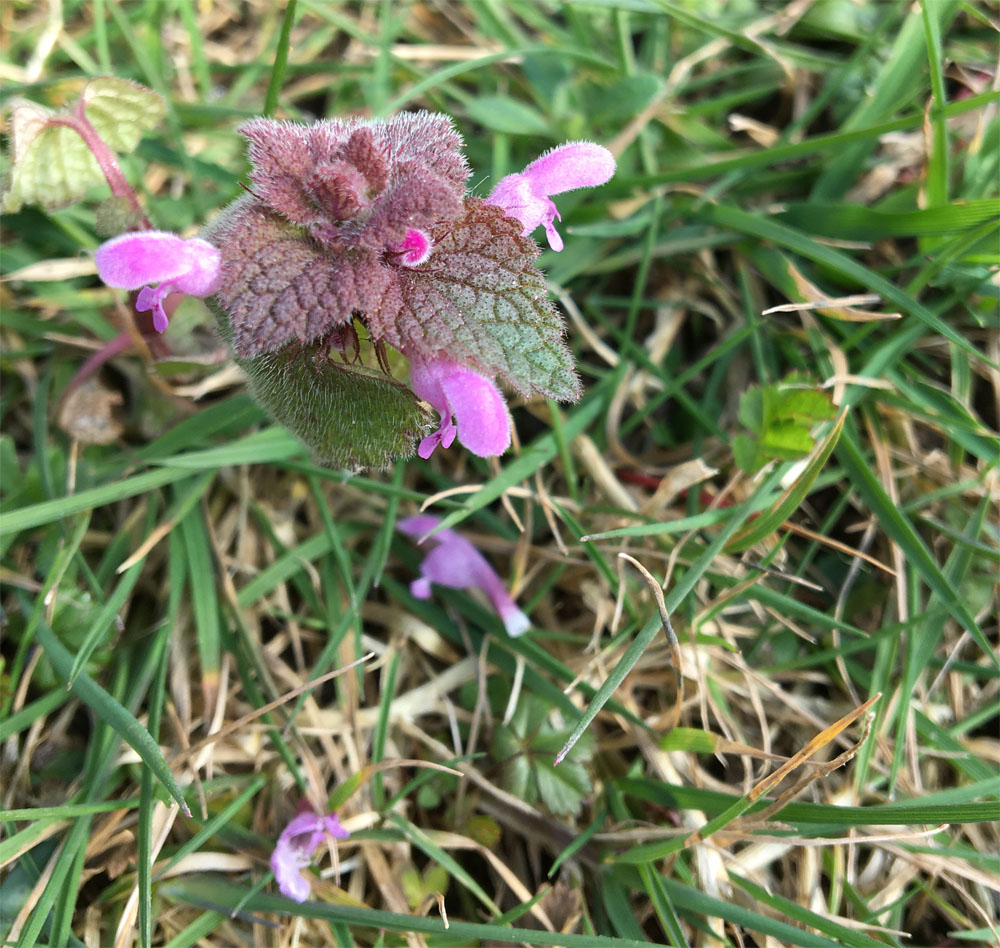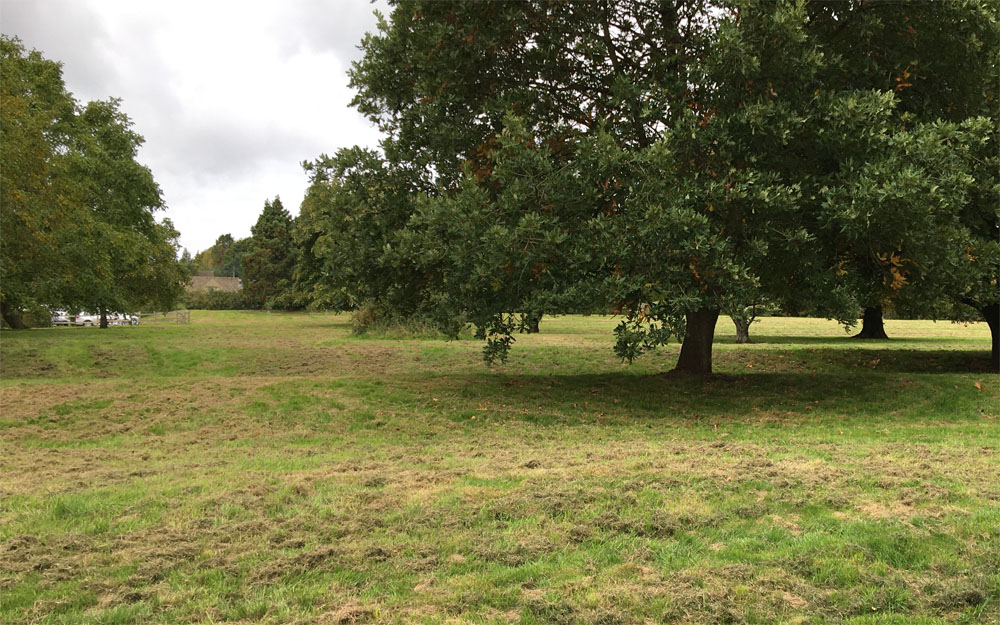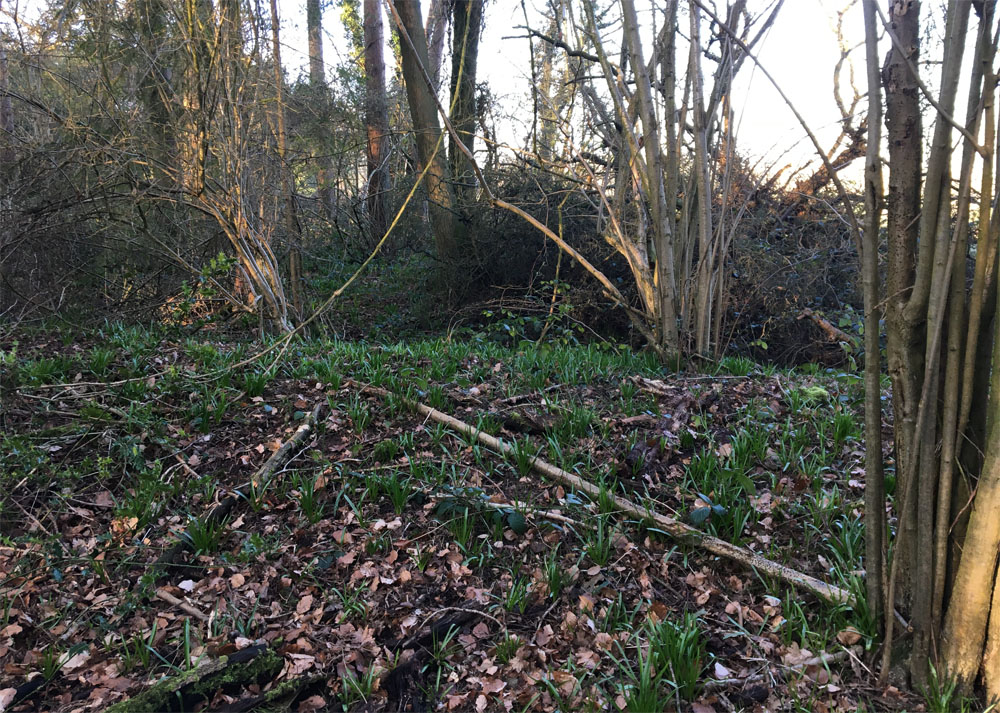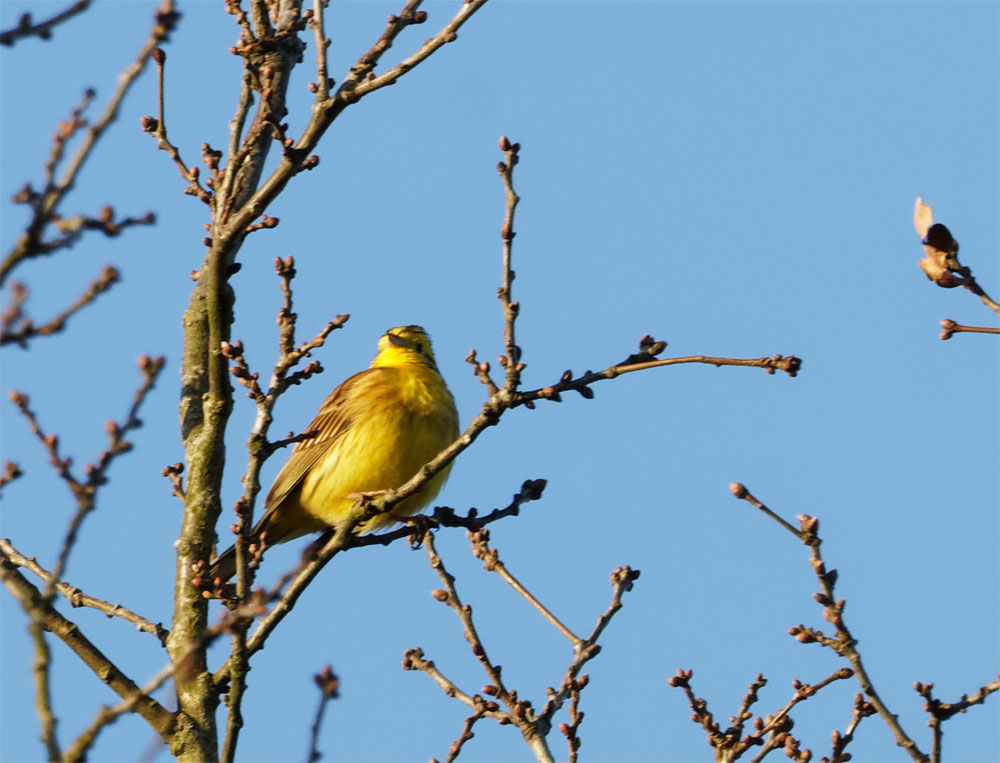A red dead-nettle. I photographed it last year when it ended winter by brightening the verges. Now it’s here again – nothing has changed.

Well, really. More has changed than we would ever have conceived possible. But not this flower, this tiny leftover from the whims of our Neolithic forebears, who inadvertently introduced a palette of wild flowers along with early agriculture. Dead-nettle reminds us that as we work, play upon or explore wild places, we are writing a story whether we wish it or not – and pages from it can be read 4,000 years after their authors are gone.
Read, that is, in the flowers, and more: in even the folds of fields. Ridge-and-furrow is the insignia of the Middle Ages: this field has not been ploughed for centuries. When the ancient historic landscape survives, so often does a rich community of wild things. Such places are alive, as well as a tangible link to what came before.

In the trees, too: via coppicing, the art of felling a tree yet keeping it alive. Stumps sprout new straight stems that were useful for many things, including the supports for the Sweet Track – a causeway built across boggy ground in Somerset almost 6,000 years ago. Hazel was one of the species used, and it continued to produce many useful goods until coppice was finally overtaken by modern industry. Woods remember the past with clustered stems of old coppice.

Dormice love them: hazelnuts to eat and safe places to hide. Many conservation groups encourage coppicing to keep this habitat alive. But there is a little more in the photo above – see the bank in the foreground? That, too, is a relic – post-medieval earthworks of unknown purpose. Whoever built them, whoever designed them, we do not know; but their legacy lives on, even with bluebells emerging upon it.
And pages from the past – and present – are written in the birds, too, and none as bright as the gorgeous yellowhammer, a bunting that thrived for so long in the hedgerows that the Enclosure Acts promoted, and suffered of course as agriculture industrialised. Their cry of a little bit of bread and No cheese is not as familiar as it once was, so I was delighted to see four of them on my walk yesterday.

We are still writing stories in nature. Future generations will learn far more about us than we might want them to know simply through reading the land, and it will not lie to save our blushes. Let us make sure that the stories we leave are honourable ones.
I love the bird’s call!
LikeLiked by 1 person
Have you heard it? If not, it’s online here: https://www.bl.uk/collection-items/yellowhammer-emberiza-citrinella-song#
They are very pretty little things. The weird name is a corruption of German words, apparently. They’re also acquired weird folklore in parts of the UK where they supposedly warn snakes of approaching trouble!
LikeLiked by 1 person
Thanks for that, Adele. That is so cool!
LikeLiked by 1 person
I love the yellowhammers! I hope we leave honourable tales as well.
LikeLiked by 1 person
One of my favourite birds, and one of the most colourful in England. They seem almost impossibly yellow no matter how many times you look at them.
LikeLiked by 1 person
It is so interesting how human history is written in the land, the vegetation and even the birds. Let’s hope we learn from history! The phrase ‘a little bit of bread and no cheese’ took me back to visiting my UK grandparents when I was a kid and that was one of the phrases they taught me in relation to birds. I also remember them greeting magpies by saying something like ‘good morning Mr or Mrs Magpie, whichever you might be’. I have read of other variants on this greeting, but not of this specific variation. (My grandparents came from Herefordshire and Gloucestershire.) I have been looking at videos and listening to the call of the yellowhammers and they certainly are very pretty, as is their call. It is very sad that old practices such as coppicing and enclosing farmlands with hedgerows are not being maintained with consequent damaging effects on habitat and wildlife.
Thanks for the interesting post.
LikeLiked by 2 people
Magpies attract many traditional sayings but that is a new one for me. I hope that yellowhammers and other arable farmland birds benefit from the proposed changes to agricultural subsidies, but we’ll see. Its cousin species, the cirl bunting, has become extremely rare for similar reasons.
There are teams of volunteers who undertake coppicing and hedge management on a voluntary basis, usually on nature reserves. It’s hard work but brings huge benefits to wildlife.
LikeLiked by 1 person
That is good to know that people volunteer to continue with coppicing and hedge management, which are so beneficial. So sad that so many birds and other species are in decline and for so many reasons. The proposed agricultural subsidies do seem to bring some potential for some hope though.
LikeLiked by 1 person
Very nice Adele… keep walking and we’ll keep reading
LikeLiked by 1 person
Love this: “we are writing a story whether we wish it or not – and pages from it can be read 4,000 years after their authors are gone.” So true. Our land used to be farmed pasture, now reverted back to forest, but those old furrows by the river are still evident (not to mention the plethora of farm equipment slowly rusting back to earth).
Lovely yellowhammer… are they related to warblers?
LikeLiked by 1 person
Never mind, I just read that though they are both Passerines, they are of the bunting family, not warblers. 🙂 Curious minds and all that! 😀
LikeLiked by 1 person
Hi Eliza, sorry for the late reply! Yes, yellowhammers are a species of bunting. Most of our warblers are very quiet colours but make up for that with incredibly loud voices.
LikeLiked by 1 person
On recent visits to Britain I have seen fewer Yellowhammers each time. But I really stopped by to let you know that I just finished reading “The Hidden World of the Fox” and enjoyed in immensely. Well done!
LikeLiked by 1 person
Hi David, thank you very much – glad you enjoyed it!
LikeLike